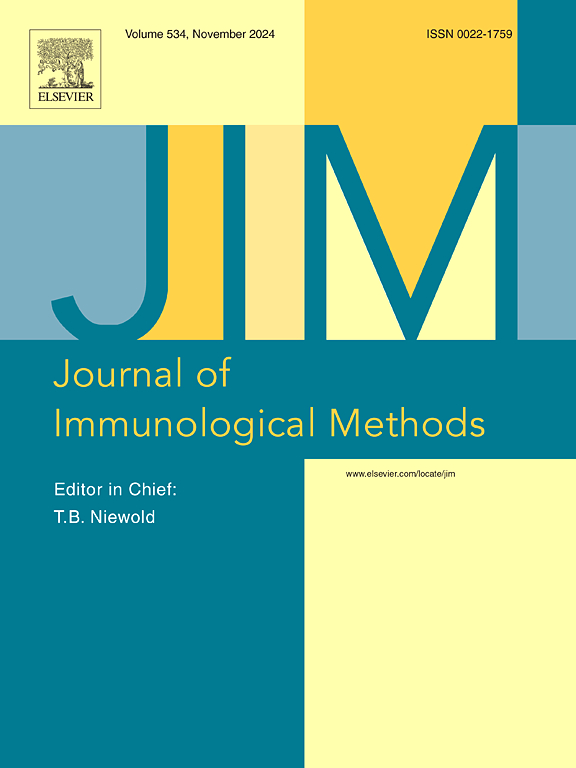Challenges for complement functional assays in the clinical laboratory: From test validation to clinical interpretation
IF 1.6
4区 医学
Q4 BIOCHEMICAL RESEARCH METHODS
引用次数: 0
Abstract
Complement functional assays are essential first-tier tests for a gamut of disorders spanning from inborn errors of the immune system which lead to recurrent severe infections, to angioedema attacks, presentation of autoimmune disease, thrombotic microangiopathies and rare kidney disorders. These assays evaluate the activity of the three complement pathways and specific complement components, which helps in differential diagnosis and monitoring disease progression. The rising use of complement inhibitors for treating complement-mediated thrombotic microangiopathies has heightened the demand for personalized treatment plans and laboratory assessment of complement blockage. However, conducting these assays is challenging due to the labile nature of complement proteins, which necessitates strict handling protocols—prompt processing, cold centrifugation, and preferable storage at −80 °C. Currently, the only FDA-approved complement functional test is the classical pathway activity assay while other tests are categorized as laboratory developed tests (LDTs). Validation of LDTs requires thorough evaluation of precision, accuracy, reference intervals, clinical reportable ranges, analytical sensitivity, and specificity. Achieving harmonization across laboratories is critical but heavily relies on the methodologies and calibrators used. This article discusses the various challenges and limitations associated with complement functional assays, highlighting the need for standardization and improved practices in clinical laboratories.
临床实验室补体功能分析的挑战:从测试验证到临床解释。
补体功能测定是一系列疾病必不可少的一级检测,从导致复发性严重感染的免疫系统先天性错误到血管性水肿发作、自身免疫性疾病的表现、血栓性微血管病变和罕见的肾脏疾病。这些检测评估三种补体途径和特定补体成分的活性,有助于鉴别诊断和监测疾病进展。补体抑制剂用于治疗补体介导的血栓性微血管病变的使用越来越多,这增加了对个性化治疗计划和补体阻塞实验室评估的需求。然而,由于补体蛋白的不稳定性,进行这些检测是具有挑战性的,这需要严格的处理方案——快速处理,冷离心,最好在-80 °C下保存。目前,fda唯一批准的补体功能检测是经典的途径活性检测,而其他测试则被归类为实验室开发测试(LDTs)。LDTs的验证需要对精密度、准确度、参考区间、临床报告范围、分析敏感性和特异性进行全面评估。实现实验室间的协调至关重要,但在很大程度上依赖于所使用的方法和校准器。本文讨论了与补体功能测定相关的各种挑战和限制,强调了临床实验室标准化和改进实践的必要性。
本文章由计算机程序翻译,如有差异,请以英文原文为准。
求助全文
约1分钟内获得全文
求助全文
来源期刊
CiteScore
4.10
自引率
0.00%
发文量
120
审稿时长
3 months
期刊介绍:
The Journal of Immunological Methods is devoted to covering techniques for: (1) Quantitating and detecting antibodies and/or antigens. (2) Purifying immunoglobulins, lymphokines and other molecules of the immune system. (3) Isolating antigens and other substances important in immunological processes. (4) Labelling antigens and antibodies. (5) Localizing antigens and/or antibodies in tissues and cells. (6) Detecting, and fractionating immunocompetent cells. (7) Assaying for cellular immunity. (8) Documenting cell-cell interactions. (9) Initiating immunity and unresponsiveness. (10) Transplanting tissues. (11) Studying items closely related to immunity such as complement, reticuloendothelial system and others. (12) Molecular techniques for studying immune cells and their receptors. (13) Imaging of the immune system. (14) Methods for production or their fragments in eukaryotic and prokaryotic cells.
In addition the journal will publish articles on novel methods for analysing the organization, structure and expression of genes for immunologically important molecules such as immunoglobulins, T cell receptors and accessory molecules involved in antigen recognition, processing and presentation. Submitted full length manuscripts should describe new methods of broad applicability to immunology and not simply the application of an established method to a particular substance - although papers describing such applications may be considered for publication as a short Technical Note. Review articles will also be published by the Journal of Immunological Methods. In general these manuscripts are by solicitation however anyone interested in submitting a review can contact the Reviews Editor and provide an outline of the proposed review.

 求助内容:
求助内容: 应助结果提醒方式:
应助结果提醒方式:


